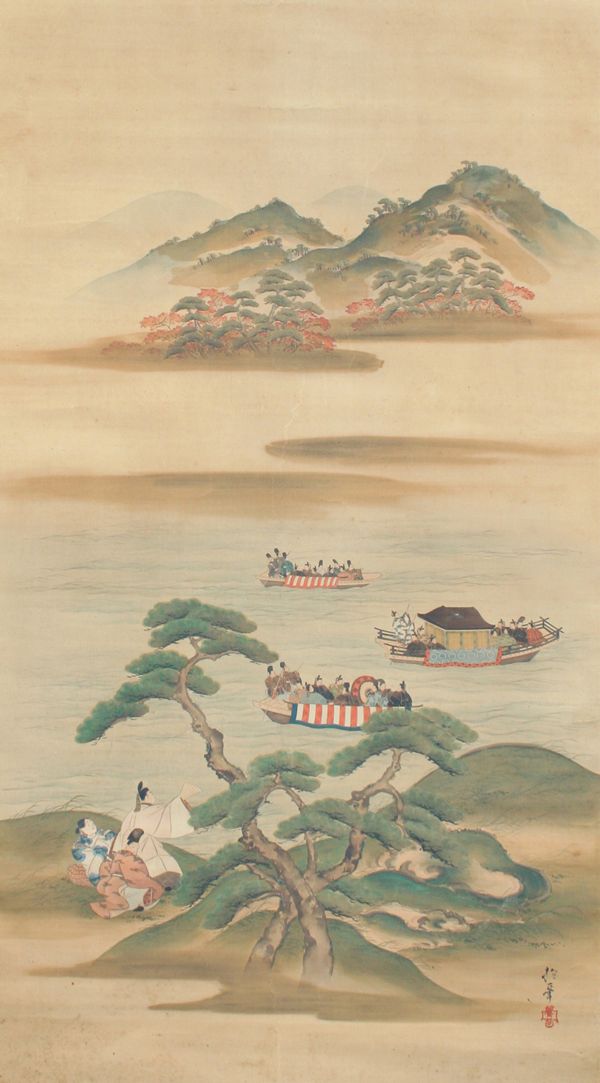|
江戸後期の画家。名は忠因。通称栄八。姫路城主酒井忠以の弟として江戸に生まれる。文芸を愛好する酒井家の血を継いで、画はもちろん、俳諧、和歌、連歌、国学、書、さらに能、仕舞などの諸芸をたしなんだ。画業は初め狩野高信から狩野風を学び、また宋紫石について沈南蘋の写生画風、歌川豊春から浮世絵、さらに土佐派、円山派などの技法を習得、親交あった谷文晁からも影響を受けるなど、諸派の画風を次々と学んだ。のち尾形光琳の作品に接して深く傾倒し、独自の立場でその作風を試み、江戸時代の装飾芸術の流派「琳派」の最後を飾った。文政11年11
月29日没。
本紙は、経年による染みがありますが概ね良好です。
表装は、染み、巻きしわ、下部に破れがあります。
apanese hanging scroll painting, Edo period, 19th century.
The Imperial family enjoys music played by the orchestra on boats
floating in the lake under the scenic beauty of Autumn.
Signed Hoitsu and sealed. It is painted on silk with ink and
pigments, accompanied by a paulownia wood box.
Sakai Hoitsu (1761-1828)was a Japanese painter active in the late
Edo period
Hoitsu had all the advantages of the finest education in poetry, Noh
drama, tea ceremony, and painting. He began his studies in art in
the Kanō school
and continued to study under Utagawa Toyoharu (1735-1814) in the
ukiyo-e style. He also studied Japanese Nan-ga (Japanese literati
painting) under
So Shiseki(1715-1786) as well as Maruyama scroll painting and Tosa
school painting before finally becoming a painter of the Rinpa
school.
Hoitsu became a Buddhist monk in 1797.
Condition:The
scroll is in good condition with minor marks on the painting
associated with age. There are slight stains, light folding creases
and
tears on the lower part of the mounting.
|







